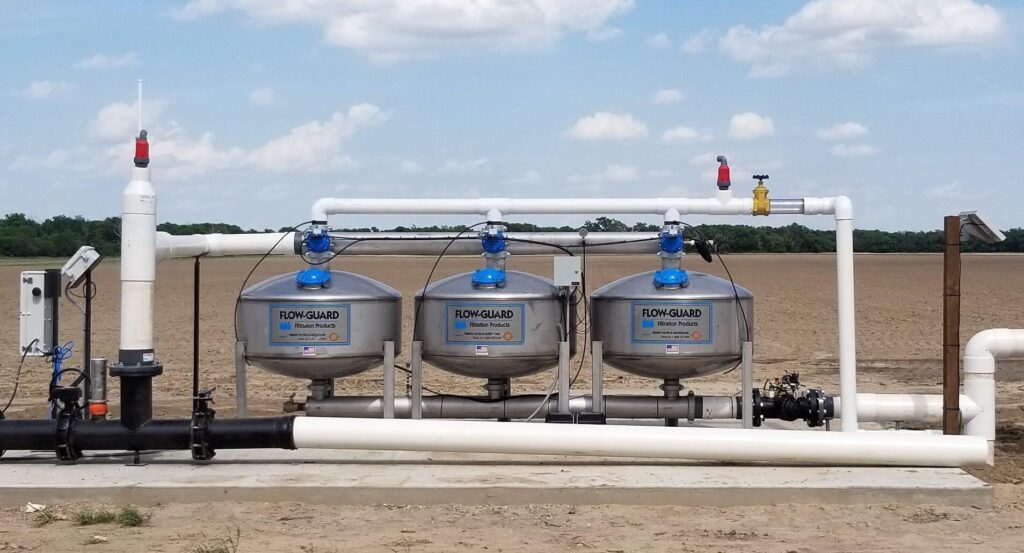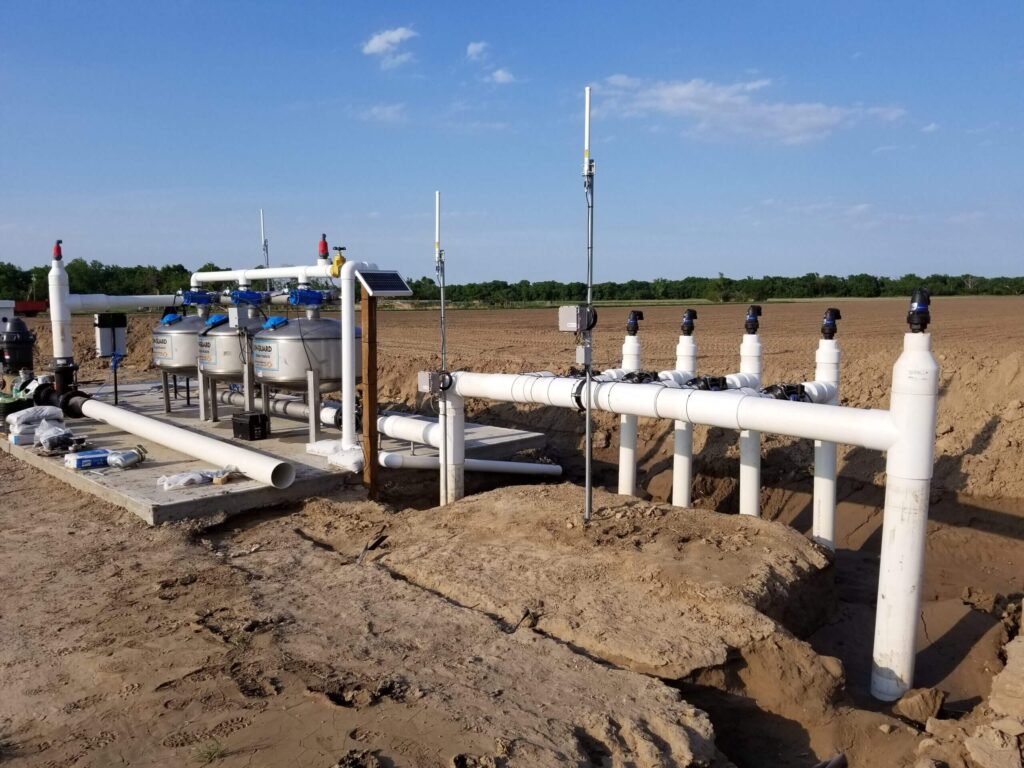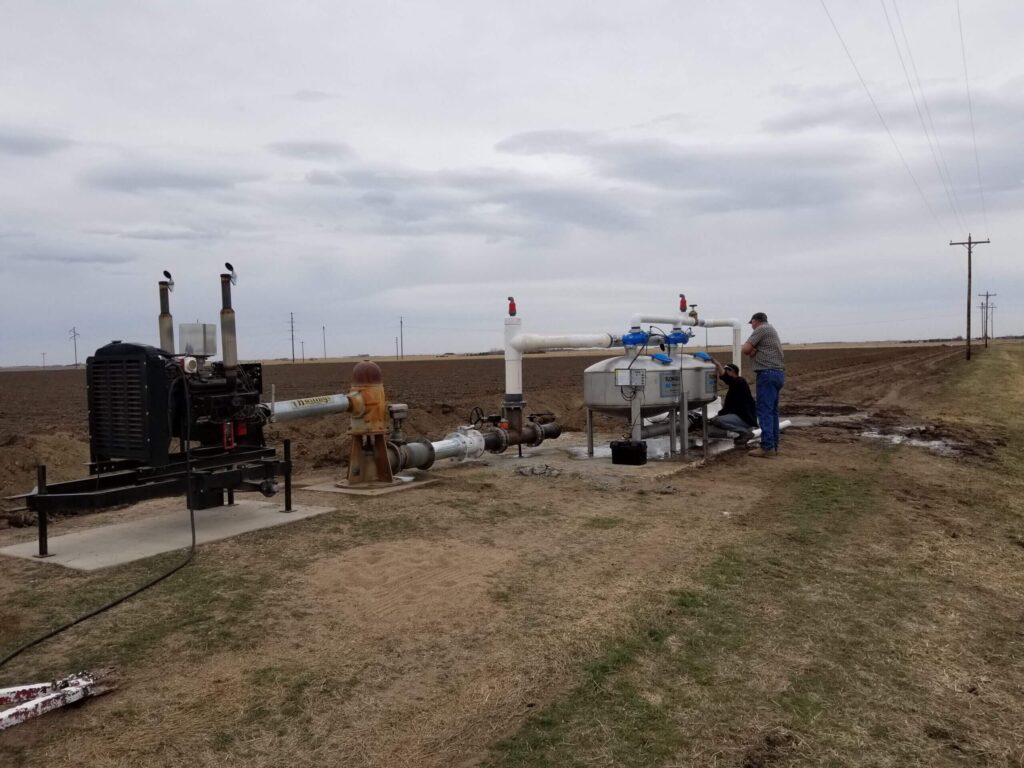Redefining Water Efficiency with Subsurface Drip System
Water scarcity and rising concerns over wastage have propelled the adoption of water-efficient systems across various industries. In particular, the agricultural sector has been facing immense pressure to reduce water consumption while maintaining crop yield and quality. Traditional irrigation methods such as flood and sprinkler systems have proven to be inefficient in this aspect, leading researchers and companies to explore alternative solutions. Among these innovations, subsurface drip system (SDS) are gaining increasing recognition for their unparalleled efficiency in delivering water directly to plant roots. In this blog post, we will delve into how SDS technology is redefining water efficiency in agriculture, its benefits over traditional irrigation methods, and its potential impact on global sustainability efforts.

Introduction to the Concept of Subsurface Drip Systems (SDS) and Its Benefits
Subsurface Drip Systems (SDS) represent a revolutionary approach to agricultural irrigation. These systems make use of a network of buried tubes or drip lines to deliver water directly to the root zones of plants. This targeted approach facilitates optimal absorption, minimizes waste, and allows for precise control over the amount of water each plant receives.
The benefits of SDS are manifold. Firstly, they reduce water wastage by up to 60% compared to traditional methods, making SDS a more environmentally friendly choice. Furthermore, they help in maintaining the soil’s moisture level and nutrients, which can lead to improved crop yield and quality. Lastly, SDS reduces the risk of surface water evaporation and runoff, mitigating the risk of water contamination and excessive soil erosion. Given these advantages, SDS is set to transform the landscape of agricultural irrigation and contribute significantly to global sustainability efforts.
Understanding Water Usage in Households and its Impact on the Environment
Water usage in households plays a significant role in the overall water consumption and has a considerable impact on the environment. With activities like cooking, cleaning, bathing, and gardening, an average household uses quite a significant volume of water daily. However, the issue lies not just in the consumption but also in the wastage. Leaky faucets, inefficient appliances, excessive lawn watering, and poor water usage habits contribute to a massive amount of water waste.
This excessive water use and wastage strain our water resources, leading to a decline in the availability of freshwater. Additionally, it contributes to increased energy consumption, as a considerable amount of energy is used in purifying and transporting household water. Furthermore, overuse of water in households can lead to higher wastewater generation, which can pose a significant threat to our water bodies and overall ecosystem if not appropriately treated. Hence, adopting a sustainable approach towards water usage at the household level, like the use of water-efficient appliances and fixtures and mindful water consumption habits, is crucial for environmental preservation.

How SDS Works and Why it is More Efficient Than Traditional Watering Methods
Subsurface Drip Systems (SDS) operate on a relatively simple yet highly effective mechanism. They consist of a network of drip lines or tubes buried under the soil surface, directly in the root zones of plants. These lines are connected to a water source and controlled by a regulator, which manages the water flow based on the specific needs of the plants.
As water is delivered directly to the root zone, it minimizes the loss that typically occurs due to surface evaporation or runoff in traditional irrigation methods. SDS also allows for the precise application of nutrients, making it a valuable tool for fertilizer management. This targeted delivery system ensures that every drop of water is effectively used, reducing the overall water requirement.
Furthermore, SDS promotes a healthier plant growth environment. By maintaining an optimal moisture level at the root zone, it reduces the risk of disease and pest problems that are usually associated with water-saturated environments created by traditional irrigation methods.
In terms of efficiency, studies show that SDS can save up to 60% more water compared to conventional methods. This efficiency, coupled with the potential for improved crop yield and quality, makes SDS a game-changer in agricultural irrigation, marking a significant step towards sustainable and responsible water management.
Cost Comparison Between SDS and Traditional Watering Methods
When comparing the costs of Subsurface Drip Systems (SDS) with traditional watering methods, it’s essential to consider not only the initial setup costs but also long-term operational and maintenance expenses. Initially, SDS can be more costly to install due to the intricacy of the system, requiring a network of underground tubes and a more sophisticated control system. However, these upfront costs can be offset by significant water and energy savings in the long run.
Traditional irrigation methods, while cheaper to set up, can prove to be more expensive over time. This is due to higher water usage, increased energy consumption to distribute the water, and the potential for additional costs associated with water waste, such as soil erosion and nutrient leaching. Moreover, less efficient water delivery could lead to lower crop yields, indirectly affecting the overall profitability.
Therefore, while SDS may require a larger initial investment, the long-term savings and potential yield improvements make it a cost-effective solution for sustainable agriculture.

Tips for Choosing the Right SDS System for Your Home and Landscape
Choosing the right Subsurface Drip System (SDS) for your home and landscape requires careful consideration. Here are a few tips to guide you:
- Assess your landscape requirements: Consider the types of plants you have and their individual watering needs. A vegetable garden may require a different approach than a lawn or flowerbeds.
- Understand the Soil Type: Different soils have varying water absorption rates. For instance, sandy soil drains faster than heavy clay. Understanding the soil type will help you configure your SDS for optimal functionality.
- Consider the System’s Flexibility: Choose an SDS that allows you to adjust the water delivery rate as per the changing needs of your plants and the climate.
- Look for Quality Components: Drip lines, regulators, filters, and emitters are all critical components of an SDS. Ensure they are of high quality for durability and reliability.
- Professional Installation: Even though it might seem costly, getting your SDS professionally installed can save you money in the long run. Professionals have the expertise to install the system correctly, reducing the risk of future problems.
- Plan for Maintenance: Like any system, SDS needs to be maintained for peak performance. Ensure you’re prepared for tasks like periodic flushing of the lines or checking for leaks.
Remember, the key to a successful SDS is balancing your landscape’s requirements with the system’s efficiency and sustainability.
DIY Installation Guide for Those Who Want to Save Even More Money
Before you get started, gather the necessary items for your SDS installation, which typically include drip tubing, connectors, a backflow preventer, a pressure regulator, a filter, and an end cap or flush valve.
- Plan Your Layout: Start by sketching out your landscape and marking the locations of your plants. This will help you determine where to lay the drip lines for optimal water coverage.
- Prepare the Ground: Make sure the area is clear of any debris or sharp objects that could damage your drip tubing.
- Lay the Drip Tubing: Run the drip lines along the planned routes, ensuring that the emitters on the drip line correspond to the locations of your plants.
- Install the Backflow Preventer, Filter, and Pressure Regulator: Connect these components to your water source. This is crucial to keep your system running smoothly and protect it from damage or blockages.
- Connect the Drip Lines: Next, connect the drip lines to the water source. Be sure to use connectors that are the appropriate size for your drip tubing.
- Install the End Cap or Flush Valve: This should be installed at the end of each drip line to allow for flushing of the system.
- Test the System: Turn on the water to check the system for leaks and to ensure each plant is receiving adequate water. Make any necessary adjustments.
- Bury the Drip Lines: Once everything is working correctly, bury the drip lines. The depth will depend on your specific landscape and plant needs, but typically, they should be 4 to 6 inches underground.
- Maintenance: Regularly check your system for leaks or clogs in the emitters, and flush the system periodically to clear out any debris.
Please remember that each installation can be unique, so always refer to the manufacturer’s instructions and seek professional advice if you’re unsure. While the initial effort might seem intensive, the water and cost savings make it a worthy investment for a sustainable future. So why not switch to a Subsurface Drip System today and start reaping the benefits for both your wallet and the environment!
